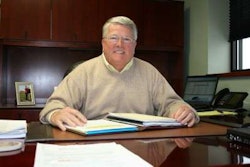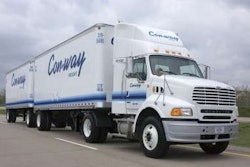UPS Inc. today, April 23, said first-quarter profit for the three months ended March 31 fell to $401 million compared to profit of $906 million a year ago, a decline of more than 55 percent. Revenue was $10.94 billion, down 13 percent from $12.68 billion.
Consolidated average daily volume totaled 14.5 million packages, a 3.9 percent decline; average revenue per piece decreased 6.9 percent, reflecting changes in product mix, declining fuel surcharges and weight per package and the negative impact of currency. The company’s international segment also was affected, posting a 1 percent volume decline with some benefit from the timing of Easter in March; the 15.3 percent decline in revenue per piece reflected similar negative trends as in the U.S. small package operation as well as the negative impact of currency.
“As economic activity deteriorated throughout the world during the quarter, we managed costs while maintaining our excellent service to our customers,” said Scott Davis, chairman and chief executive officer of Atlanta-based UPS. “We are optimistic about the company’s future. UPS is becoming an even leaner, more efficient enterprise, making many improvements that are sustainable when the economic climate strengthens.”
Kurt Kuehn, the company’s chief financial officer, said UPS is pleased that its cost-control initiatives are on plan and producing the benefits they were designed to achieve. “In fact, we have identified $300 million in additional initiatives to help offset some of the recessionary impacts we’re experiencing,” Kuehn said.
UPS expects the second quarter will be another difficult one, Kuehn said. “Economic indicators tell us recovery in the U.S. might begin late this year, but more likely not until 2010,” he said. “UPS is financially the strongest company in our industry. This strength, coupled with our broad product portfolio and the most extensive international presence, will help ensure our customers receive the best in transportation solutions and service.”











